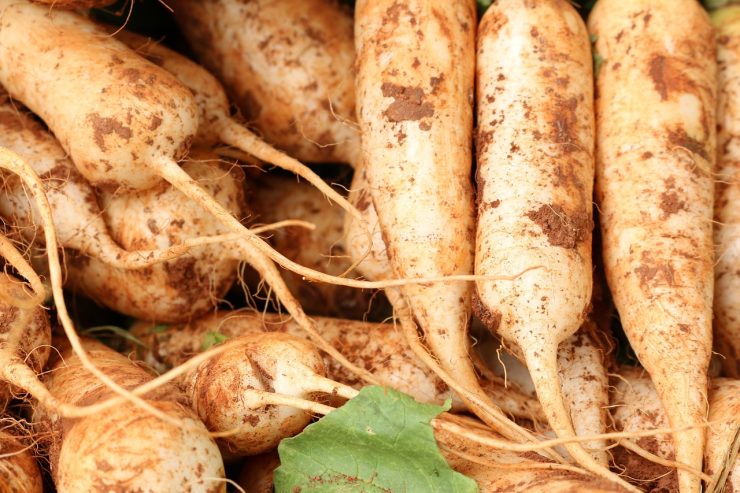Let’s talk about horseradish.
You probably know it as that spicy stuff that makes your nose burn and your eyes water—especially if you’ve had a strong Bloody Mary or dunked a shrimp in cocktail sauce. That intense, fiery kick? Yep, that’s horseradish doing its thing.
But there’s more to this bold root than just its unforgettable flavor. While some folks steer clear because it’s a little intense, horseradish is actually an underrated superfood with some serious health perks.
So what exactly is horseradish?
It’s a root vegetable, part of the Brassicaceae family—which includes cabbage, broccoli, mustard, and wasabi. Basically, it runs with a very healthy crowd. When you cut or grate the root, it releases a compound called sinigrin, which quickly transforms into mustard oil thanks to plant enzymes. That’s the stuff responsible for the signature nose-tingling heat.
And even though it’s most often used as a condiment, horseradish has been a go-to ingredient in both kitchens and traditional medicine cabinets around the world for thousands of years.
What makes horseradish so healthy?
Despite its humble appearance, horseradish is packed with vitamins, minerals, and powerful plant compounds. We’re talking fiber, vitamin C, potassium, calcium, magnesium, zinc, manganese—and a whole lot of antioxidants.
Here’s what this spicy root brings to the table:
Anti-inflammatory powers
Horseradish can help soothe inflammation in the body—think joint pain or arthritis.
Cancer-fighting compounds
Thanks to sinigrin (a type of glucosinolate), horseradish might help reduce your risk of cancer. In fact, it has ten times more of this cancer-fighting compound than broccoli. Studies have shown sinigrin can help stop the growth of cancer cells and even prevent cell mutations.
Natural antibiotic
Horseradish doesn’t just taste strong—it’s strong. It’s been shown to fight off bacteria like E. coli and Staph aureus, and it actually works better than some chemical preservatives found in processed foods.
Cold and sinus relief
That burning sensation in your sinuses when you eat horseradish? It’s not just for fun. That effect actually helps clear out mucus and harmful bacteria. So next time you’re stuffed up with a cold or battling a sinus infection, a little horseradish might do the trick—without the side effects of over-the-counter meds.
Natural diuretic and detox support
Horseradish helps flush out toxins through increased urination, making it a handy remedy for urinary tract infections. It supports kidney health, and its mild diuretic effect may even help lower blood pressure.
Better digestion
It stimulates bile production, which helps break down fats and cholesterol. So if your digestion needs a little boost, horseradish might be just the thing.
How to enjoy horseradish (without crying too much)
Most of the time, you’ll find it already prepped in jars as a sauce or condiment—but fresh horseradish root is where it really shines. You can grate it into sauces, soups, or even veggie juices for an extra zing.
A little heads up: once you start chopping or grating it, be ready for your eyes and nose to react—it’s intense. But that’s part of its charm.
Try mixing fresh-grated horseradish into ketchup for a bold shrimp cocktail sauce, or add it to your favorite homemade dressings, dips, or marinades.











